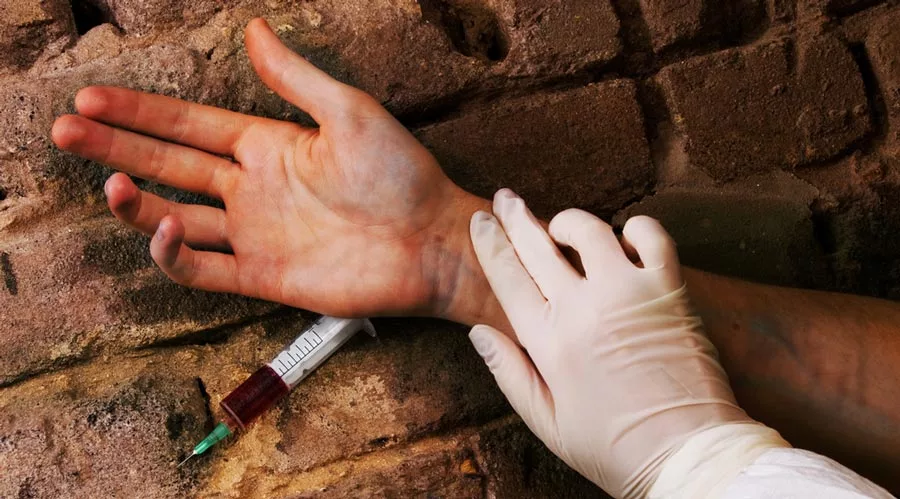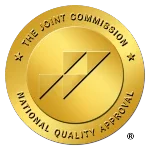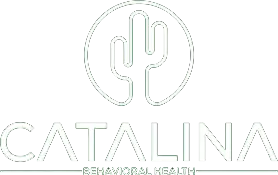Understand the Risks and Get Help for IV Meth Abuse at Catalina
On the streets, meth slamming describes shooting or injecting crystal meth. Slamming or injecting drugs makes them reach the brain faster. In the case of meth, injecting it causes a rush of dopamine to the brain that results in feelings of extreme euphoria. It is hard not to chase this overwhelming feeling of euphoria once you’ve felt it, which is the reason many meth users end up binging- using and crashing and then using again for weeks on end.
Slamming meth is incredibly addictive, but it is also incredibly dangerous. It causes physical and mental symptoms in the short and long term. Plus, if you’ve ever tried to quit, then you likely know that withdrawal symptoms can make it feel like you are dying.
Fortunately, there is help. At Catalina Behavioral Health, we can help you with withdrawal symptoms and put the support in place that makes quitting easier. You don’t have to overcome meth addiction alone – let’s find out how our team can assist you!
24 Hour Detox and Rehab Helpline – Call Now!
What Exactly is Slamming Meth?
Slamming meth (or meth slamming if you prefer) describes intravenous injection, meaning you use a needle to shoot it into your veins. Some people also use a syringe to inject meth under the skin (skin popping) or they inject it into their muscles (muscle popping).
Injecting meth into your veins results in the most intense high from the drug because of the rapid release of crystal methamphetamine into your bloodstream. This rapid release leads to even higher risks for addiction and a greater chance of overdose from meth.
Additionally, it leads to the greatest risk of health problems because of the lifestyle surrounding meth users and the dangers associated with sharing needles with other drug users.
What Happens When You Use Meth?

People use methamphetamine by swallowing it in powder or pill form, smoking it, snorting it, or shooting it. Regardless of the method, meth interacts with the central nervous system by lighting up the pleasure center of the brain.
In most cases, people who inject meth come down faster and crave more meth as a result. Slamming meth produces an intense rush but this rush does not last as long as other methods of ingesting it.
Why is Injecting Drugs So Addictive?
Slamming meth or other drugs is addictive because injecting leads to the fastest delivery of the substance. The high from shooting meth or other drugs is more intense and comes on much quicker than other ways of ingesting it.
However, the substance also travels through your body faster and causes a comedown. Once you’ve come down from meth, you’ll crave feeling that euphoria. Chasing this high may lead to meth addiction in a short span of time.
Additionally, it’s also a given that you will need increasing amounts of a drug to get high over time.
Find Proven Meth Withdrawal Support at Catalina!
The Realities and Risks of Slamming Meth
Have you ever seen before and after photos of individuals who use methamphetamine? Long-term meth abuse has severe consequences on your physical appearance, as well as your mental health disorders too. Here’s a look at some of the known effects:
- Puncture marks, track lines, abscesses, or collapsed veins
- Extreme weight loss
- Itching that leads to scratching, skin sores, and abscesses
- Memory loss and confusion
- Mood disturbances and anxiety
- Insomnia
- Paranoia, hallucinations, psychosis, and delusions
- Increased violent tendencies, including suicidal and homicidal ideations
- Adopting risky or self-destructive sexual practices
- Dental problems and tooth loss, often referred to as “meth mouth”
While these are most apparent, these physical and mental problems are only the beginning of all the consequences associated with using meth.
Overdose and Health Issues Associated with Injecting Meth

When injecting meth or any other drugs, the dangers involved depend on the health of individuals that share needles and how clean the needles are. Bacteria in syringes or the drugs you inject with increases the chance of skin infections or infectious diseases.
Additionally, people who share needles are at increased risk of being exposed to bloodborne pathogens including HIV, hepatitis B, and hepatitis C.
Bacterias and illnesses aside, there is a risk of overdose any time you inject a drug. There is no consistency with different batches of methamphetamine, so the dosage may be stronger than you are expecting.
You also cannot stop a drug from making its way through the digestive system of your body after slamming it, so there is less control than with methods like smoking.
The Meth Slamming Subculture and Exposure to HIV
Stimulant drug use in particular is relatively widespread among gay men and members of the gay community. Methamphetamines are commonly used at sex parties because of the way they increase libido and pleasure from sex and sexual experience. It also makes a person more likely to engage in risky sexual behavior.
Of all illicit drugs, the subculture and sexualised drug use around meth, and even needle sharing, are unique to this stimulant, and much different than the practices around opioid use, in contrast.
While being part of this lifestyle isn’t true of all meth users, those that are part of this lifestyle have a heightened chance of being exposed to HIV.
According to findings, there is also a link between meth use and the progression of HIV symptoms in individuals with HIV. Using meth allows viral replication of the disease, worsening cognitive impairment associated with the disease. There’s also a greater chance of HIV becoming AIDS later in life when using methamphetamine.
What Shooting Crystal Meth Does to the Brain and Mental Health
Even exposure to small amounts of meth long-term has severe consequences for the brain. Research shows meth use damages around half of a person’s brain cells that produce dopamine. This leads to chemical imbalances and changes in brain function. Damage can last up to a year before it starts to reverse even after quitting.
Furthermore, the way that stimulants like meth interact with serotonin and dopamine in the brain has severe consequences for mental health. It does temporarily raise levels of certain neurotransmitters and cause feelings of euphoria, but meth also causes these levels to drop when you crash.
Research shows that 41.6% of adults who are addicted to stimulants like meth have a lifelong history of depression. Treating these depressive symptoms, as well as depression that results from long-term stimulant or substance abuse, is critical for long-term recovery.
How Do I Stop Shooting Meth?

I don’t have to describe how hard it is to stop any drug that has a hold on your life. Anyone who has struggled with methamphetamine abuse knows that quitting is easier said than done. This is true of any substance, whether it’s alcohol, meth, cocaine, or heroin.
While you may be able to do it alone, the best way to stop using meth long-term is to have a support system in place. Many people who struggle with intravenous drug use find that residential treatment is the most effective way to manage withdrawal and the sometimes harsh symptoms that come along with it.
Is Detoxing from Meth Dangerous?
Yes, detoxing from meth can be dangerous. Meth use causes individuals to develop mental and psychological instability that makes the withdrawal process from substance use very difficult. Often, individuals in detox might be a risk to themselves or others because of the psychological effects of meth and the high risk of depressive symptoms following meth use.
Other withdrawal symptoms might include jitteriness or shaking, fever, chills, sweating, high blood pressure, nausea, exhaustion, and even a risk of seizures. At Catalina, we can help you manage the risks involved with detox and make the process more comfortable.
Finding Treatment and Getting Past Slamming Meth

The first step to effective recovery is withdrawing from meth. This is hard to do alone, which is why a person might turn to residential treatment at places like Catalina Behavioral Health.
In residential treatment, you can detox in a safe environment while medical professionals manage symptoms of withdrawal. Residential treatment also gives you a safe place to recover, without the temptation for renewing drug abuse and the widespread availability of meth on the outside.
Following detox, a comprehensive plan will be put into place regarding treatment. This might include individual and group therapy, as well as treatment for physical or mental health conditions. Following release, you’ll also be put into contact with programs for aftercare support.
Get Proven Support to Quit Meth Today!
Get Help for Meth Abuse Today at Catalina
For those struggling with meth abuse and addiction, we want you to know that our team has your back. Catalina Behavioral Health can assist you in putting the pieces in place for long-term recovery. We understand that the path to recovery looks different for everyone.
Whether you need help with pain management, mental health, managing withdrawal, or post-treatment support, we have treatment options for recovery that will work for you. You have the ability to take back control of your life – call us today to find out how!





